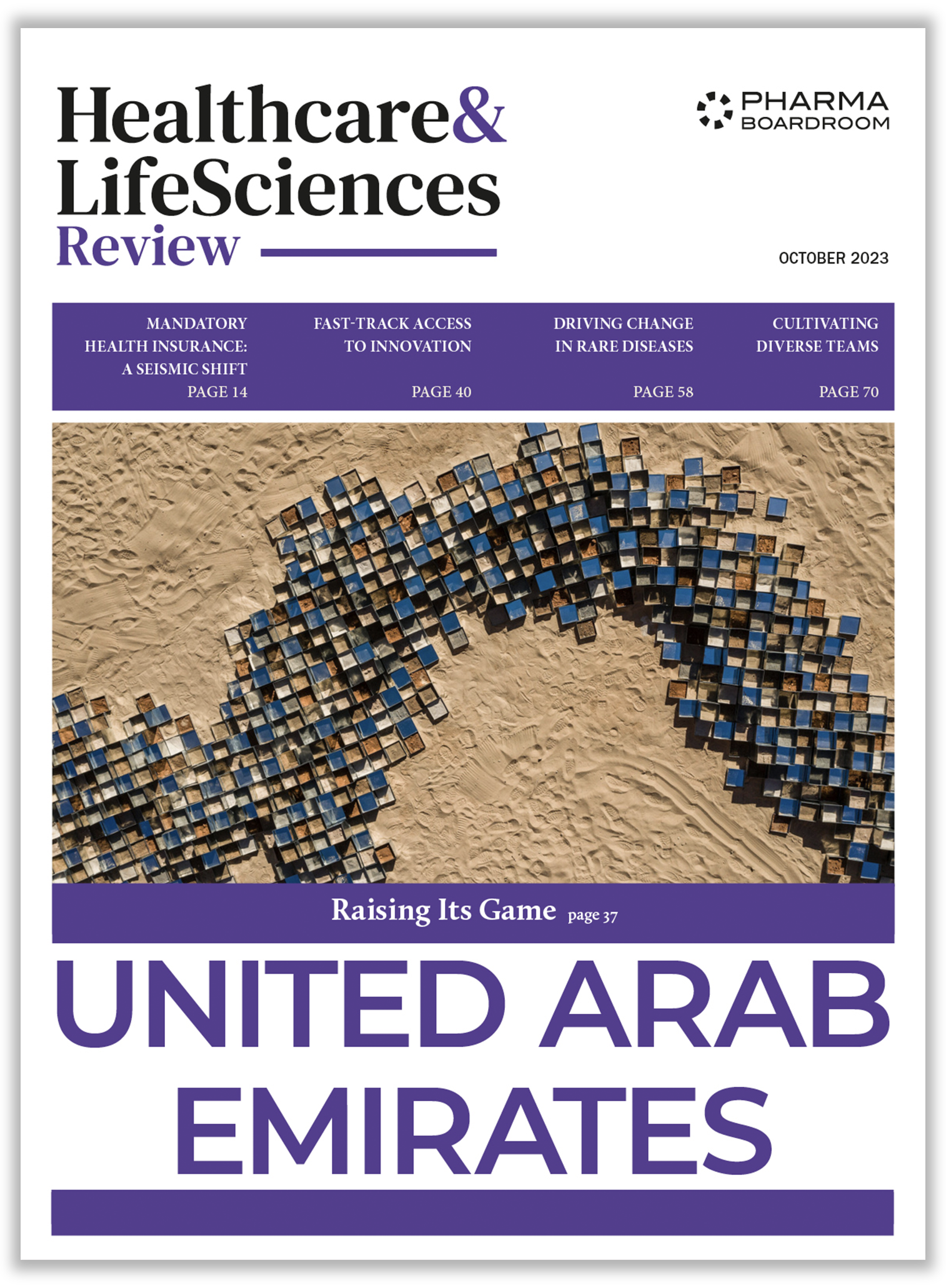Dan Zaharescu, executive director of the Romanian Association of Pharmaceutical Manufacturers (ARPIM), shares his insights on market access, the need to reform pricing methodologies, the debate around the claw-back tax, his expectations for the newly appointed minister of health and prime minister, as well as his objectives for 2020.
In November, you warned the authorities that over 100 drugs would be taken off the market due to debates over drug prices. Can you explain how it came to this situation?
Since the financial crisis in 2009-10, the Romanian authorities have built a hostile environment for pharma companies. The minimum price concept was introduced in 2004 but applied strictly in 2009, and drug prices in Romania are based off a basket of 12 countries, acknowledged having the lowest prices in Europe. Thus, Romania has the lowest drug prices in the European Union.
This pricing methodology is detrimental not only to the industry but also to the patients. It creates a paradox of affordability as medicines are taken by wholesalers and parallel traders, and sold in other markets for higher prices, encroaching on the availability within Romania.
Another source of pressure on the industry is the clawback tax. It is a tax on turnover—not profit—which is enforced by the National Health Insurance (CNAS) system. In this system, there cannot be any deficit to the budget of medicine as it is fixed. All spending above this budget is paid by the industry proportionate to the market share that is dispersed by each marketing authorization holder. When introduced, the clawback tax was at 12% and it is estimated to have increased to 28% for Q4 in 2019. Thus, pharma companies are selling their products at the lowest prices in Europe in addition to paying a 28% turnover tax on them. Hence, certain medicines are no longer economically viable, nor sustainable, and therefore, they were taken off the market despite a considerable amount having no alternatives available.
In Romania, there are certain rules associated with the withdrawal procedure of medicines in the market. The removal should be announced one year in advance, and in this timeframe, authorities can find other sources or suppliers. However, identifying viable alternatives and manufacturers that have the know-how is an extensive process. Additionally, the launch of a new product from the manufacturing process until it reaches the market takes two years. Hence there is an inherent misalignment in the system to replace medicines and avoid future drug shortages.
The amalgamation of these factors has led to a hostile economic environment and has eroded the willingness of manufacturers to support authorities by providing new medicines to the market.
Did the industry find a solution to circumvent this, and what is the long-term effect of these shortages?
Unfortunately, no solution has been found at this stage. Due to the populistic disposition of the government, it is very easy to sell the concept of cheap medicine to the population. However, there is an unbalance in the medicinal policy and this needs to be addressed. This is especially true when comparing medicines to other goods in the market: you can treat hypertension for three months with the price of one pack of cigarette.
The major hurdle in finding a solution is embedded in the lack of continuity in governmental policies and their receptivity to address issues. In the last 30 years, Romania has had 35 different ministers of health and newly appointed representatives implement disparate policies from their predecessors. It is the same case for CNAS, as in the last two years there have been four different presidents.
What are your expectations with the newly appointed minister of health and prime minister?
The expectations are very high, as for the first time the issue of access to medicine for patients is known and understood even at the level of the prime minister. Thematic issues related to access, like pricing methodologies and the claw-back tax, are being addressed properly with representatives of the industry, the ministry of finance, and the national sick fund.
A solution to this crisis is better financing and this is a challenge, as Romania has a significant deficit, exceeding the agreed threshold by the Treaty of Maastricht. The authorities have acknowledged that the budget of medicines have been frozen from 2012-18 which caused the claw-back tax to increase more than two-fold.
ARPIM and its members have tried to draw the attention of the authorities to all these problems, but no avail. The industry has tried to be a partner for the government and build long-term solutions. Nevertheless, with the new administration, there is some hope that for the next four years there will be some continuity after the elections.
What are some of the challenges that you see the administration facing?
Romania is suffering from an ageing population, tremendous emigration, and severe brain drain, particularly in the medical sector. With more than 250,000 doctors have left in the last 15 years, and with an average of 58 years, Romania has the lowest and oldest numbers of practising physicians. In the next five to ten years, medical services and needs will increase exponentially, which will threaten the social and pension system. It is projected that by 2030, one active person will have to support 2.2. pensioners, which is not sustainable. 2020 will be the period of adjustments, as structural and social weaknesses need to be addressed and solved relatively fast.
What discussions need to happen today with the industry and the government to avoid deadlocks?
The most important discussion is already happening, which is on the claw-back tax and the need to reform it. Calculations and simulations have been made, but predictability in the system is the most poignant issue. Hence, the association and its members are advocating to have it capped so that there is some reliability in the system, and companies can calibrate their efforts to implement effective microeconomic policies. The pricing methodology is the root cause of medicine shortages, and some proposals have been submitted to help authorities with these discussions.
Have there been any improvements for industry players since 2015 in these areas?
Unfortunately, pricing, market access, and claw-back tax have not seen any improvements for the industry in the last five years. Another area that has deteriorated is patients’ access to clinical trials. The average deadline for the approval of a clinical trial in Romania is around 300 days, even though by law, under the European directive, it must be approved within 60 days. The lack of resources on the national medicine agency-level delays new drugs entering the market, while in this interval, other countries are finalizing their enrolment processes or are rolling out their studies. Consequently, Romania has become increasingly less attractive for big pharma companies as a potential clinical trial destination. Subsequently, an estimated EUR 300 million (USD 334.6 million) of direct investment is forgone in addition to the elimination of 500 workplaces in the CRO sector.
What major trends have you seen affecting the attractiveness of the country in the last five years?
Despite the freezing of the medicine budget, there has been the introduction of conditional entering of International Non-proprietary Name (INN) in the market. This means that the product is more expensive than the standard therapy in Romania, but the marketing authorization holder is obliged to conclude a cost volume result agreement. This type of agreement is funded from a different source than the medicine budget. Treatments against Hepatitis C have benefited the most from this new agreement.
Another trend that has been observed is the disparity between real value transactions and total expenditure. Market auditors are taken into consideration catalogue prices of medicines yet neglect the discounts that are being approved. This results in a much lower transactional value than declared.
Has the pharma market benefitted from the Romanian economic growth?
The pharmaceutical market has grown, but in smaller proportions than the economy. The spill-over of the national economic growth has been relative to the adjusted rate of inflation. In real terms, the value of the market has been kept but fails to meet the needs of the population.
What does that mean for innovative pharmaceutical companies?
The medicine budget freeze from 2012 to 2018 has acted as a barrier for patients to access innovative medicines, and for these to enter the market. However, a compromise has been reached in terms of a cost volume agreement mechanism. This has opened the door for certain drugs to be introduced into the market, but it is not a permanent solution.
What would you say to innovators who are considering Romania as a potential investment destination?
Romania is on the 35th position amongst the European countries in terms of healthcare expenditure per capita. For the last 20 years, the government has allocated only 5% of the GDP expenditure, and this is bound to change. With the change of leadership and economic growth, this shift will be positive. The pace of the growth will depend on how successful and fast the budgetary adjustments are made, which now are hampering investments.
What are the priorities for ARPIM and its members this year?
The main priority is to create and contribute to a more favourable environment for pharmaceutical companies. This entails implementing a more reasonable claw-back and a new pricing methodology which will increase the availability of medicine for patients and improve the economic conditions in which the medicines are manufactured in Romania. The pharmaceutical companies are economical entities that operate on loss and have a responsibility towards the patients, their employees, and their stakeholders. These are obligations related to precise economic rules, precise commitments that are assumed. If the economic environment is hostile, we need to fight to improve it as to balance the existing divergent interests.
In the past years, pharmaceutical companies have been able to grow but with serious adjustments to their portfolio of products and in terms of size.
What is your source of motivation to continue and represent your members so fervently?
My biggest motivation is to be useful to my society and my country. I can help and improve the lives of my fellow countrymen and especially patients. These people deserve our support and our respect, and if we can save their lives then there is an obligation to be as engaged as possible.







